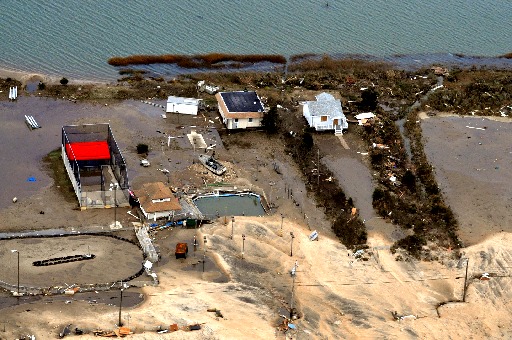
East Coast Rebuilding, But Vulnerable to Future Sandys

NEW YORK — In the aftermath of Superstorm Sandy, local governments are rethinking how to best protect the U.S. coastline from storms and flooding, which appear likely to exert a larger toll as the result of sea level rise and climate change.
The coast is now much less protected for the next storm, because Sandy's storm surge and winds destroyed dunes, flood walls and other barriers, said Joe Vietri, director of coastal and storm risk management for the U.S. Army Corps of Engineers, at a news conference here today (April 17).
Although rebuilding efforts are moving forward in many areas, they won't come close to restoring the coast to its previous condition any time soon, according to officials from along the East Coast who gathered to discuss their communities' response to Sandy and their plans for dealing with future storms, at an event organized by the Union of Concerned Scientists, a science advocacy group.
Counterproductive
Vietri said that some of the current rebuilding efforts in Sandy-damaged areas are counterproductive and a "subject of great frustration" to him. In certain places, for example, towns are rebuilding their boardwalks before remaking protective dunes or walls. Vietri said this doesn't make sense to him, since boardwalks are large and basically immovable and not as important as the features that protect them.
"You'd think you'd design your protection, and then put in your boardwalks, if you even should rebuild them," Vietri said at the news conference.
Other officials agree that lessons should be learned from Sandy in how to better protect vulnerable beaches and other coastal areas. [Nature to the Rescue: Barriers to Storm Surge]
Sign up for the Live Science daily newsletter now
Get the world’s most fascinating discoveries delivered straight to your inbox.
"We need to use the opportunity of these crises and the timeliness of Sandy to work toward better protection for our coasts," said Phil Prete, the senior environmental planner for the city of Wilmington, N.C.
One of the prime methods to do this is called beach nourishment, which involves piling sand onto beaches, often to make artificial dunes. This method is proceeding in some places, but is held up elsewhere by a lack of funds. Typically, the federal government may provide 65 percent of the money for beach nourishment, with the state and local governments kicking in the rest.
But that may be changing. In Broward County, Fla., for example, the federal and state governments have withdrawn funding for beach nourishment, said Kristin Jacobs, the mayor of Broward County. And it looks like funds are becoming less available elsewhere.
Relocate?
This lack of funding for beach nourishment and other projects is especially frustrating since every $1 spent to create protective dunes saves $9 in prevented damage, Jacobs said.
Some have questioned the wisdom of continually rebuilding beaches and dunes, and suggest that a more permanent move away from the ocean makes sense in the face of sea level rise, which is accelerating on the East Coast.
The Army Corps of Engineers is currently in the midst of a study examining the likely impact of sea level rise over the next century, and will make recommendations later this year that could impact how communities go about protecting their coasts from future storms, Vietri said. Besides dunes, protective measures could include elevating houses to avoid flooding. It's also possible that certain low-lying areas should consider relocating residents away from the water, he added.
"Sea level rise and climate change are here now, and it's safe to assume it'll get worse," Vietri said.
Email Douglas Main or follow him @Douglas_Main. Follow us @OAPlanet, Facebook or Google+. Original article on LiveScience's OurAmazingPlanet.










